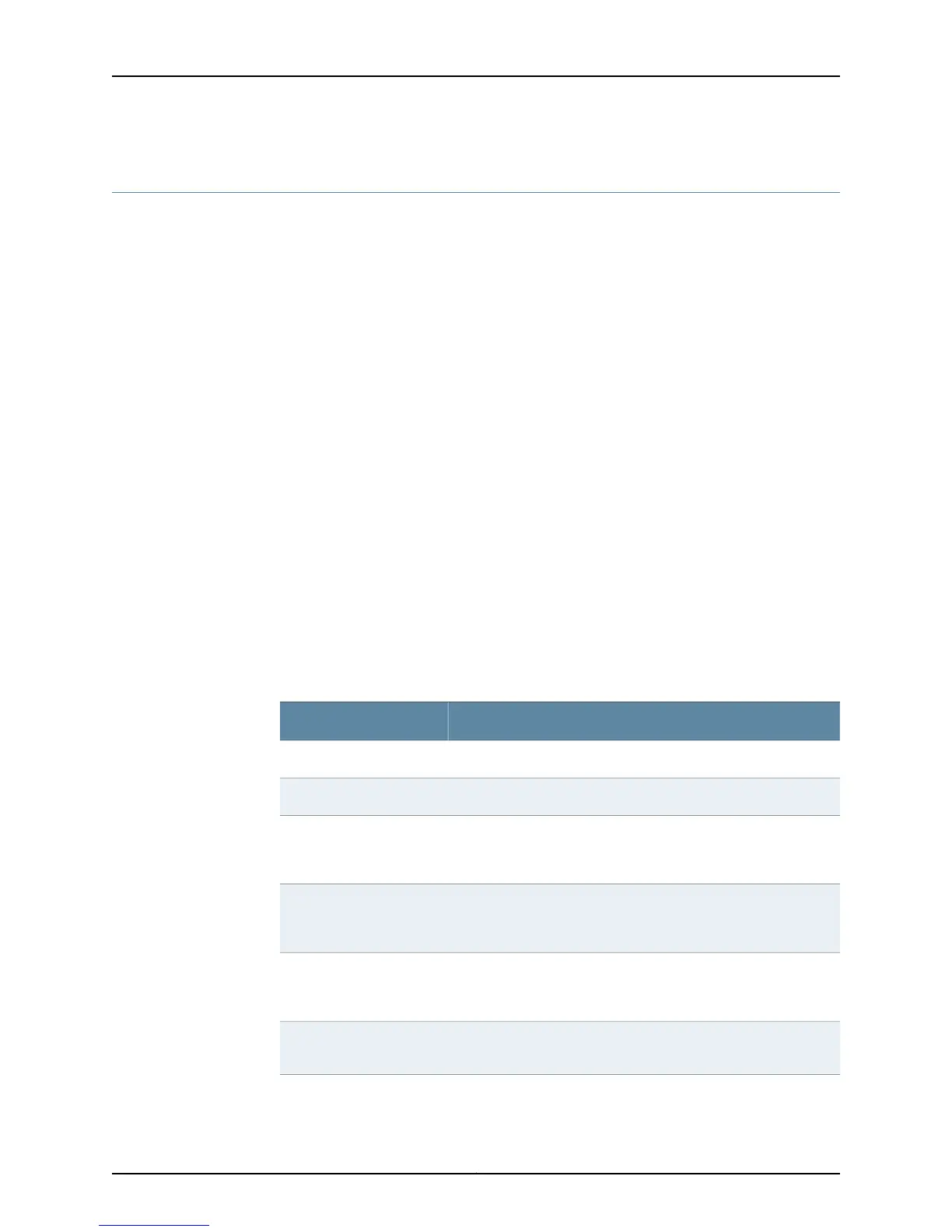Monitoring BGP Community Routes in the Community List
Purpose Display all routes that are members of communities on the specified BGP community
list. Report whether the indirect next hop of a route is unreachable; if not, display the IGP
cost to the indirect next hop. Accepts regular expressions.
The show ip bgp community-list and show bgp ipv6 community-list commands display
similar information.
Action To display all routes that are members of communities in the specified BGP community
list:
host1#show ip bgp community-list 1 fields peer communities
Local router ID 192.168.1.153, local AS 100
72077 paths, 72077 distinct prefixes (5189544 bytes used)
72077 paths selected for route table installation
21627 path attribute entries (2957324 bytes used)
Prefix Peer Communities
3.0.0.0/8 10.5.0.48 777:777 888:888
4.0.0.0/8 10.5.0.48 777:777 888:888
4.17.106.0/24 10.5.0.48 777:777 888:888
4.17.115.0/24 10.5.0.48 777:777 888:888
6.0.0.0/8 10.5.0.48 777:777 888:888
9.2.0.0/16 10.5.0.48 777:777 888:888
9.20.0.0/17 10.5.0.48 777:777 888:888
12.0.0.0/8 10.5.0.48 777:777 888:888
Meaning Table 30 on page 173 lists the show ip bgp community-list command output fields.
Table 30: show ip bgp community-list Output Fields
Field DescriptionField Name
BGP router ID of the local routerLocal router ID
Local autonomous system numberlocal AS
Total number of routes stored in the BGP routing table and amount
of memory consumed by routes. If several peers have advertised a
route to the same prefix, all routes are included in this count.
routes
Total number of routes stored in the BGP routing table. If several
peers have advertised a route to the same prefix, all routes are
included in this count.
paths
Number of routes to unique prefixes stored in the BGP routing table.
If several peers have advertised a route to the same prefix, only the
best route is included in this count.
distinct prefixes
Number of routes in the BGP routing table that have been inserted
into the IP routing table
paths selected for route
table installation
173Copyright © 2010, Juniper Networks, Inc.
Chapter 2: Monitoring BGP
